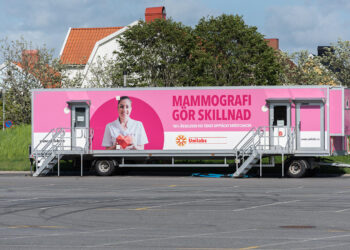VIENNA — Spironolactone, a mineralocorticoid receptor antagonist (MRA), does not reduce the rates of cardiovascular (CV) death or heart failure in patients undergoing maintenance dialysis, according to ACHIEVE trial results.
In addition, the relatively high rates of hyperkalemia associated with the drug — despite a run-in period — limit its use, said lead investigator Michael Walsh, MD, PhD, Renal Research Program, Population Health Research Institute, Hamilton, Ontario, Canada, who presented the results at the 62nd European Renal Association Congress on June 6.
He added: “Cardiovascular mortality remains very high” in these patients, at the “somewhat astounding” rate of 11% per year in the current trial.
The ACHIEVE Trial
Previous trials have suggested that MRAs are perhaps the “most promising therapies” in this space, Walsh noted. He and his colleagues undertook the Aldosterone bloCkade for Health Improvement EValuation in End-stage Renal Disease (ACHIEVE) trial to evaluate the efficacy and safety of spironolactone.
The study included patients (age, ≥ 45 y or ≥ 18 y with history of diabetes) with kidney failure receiving maintenance dialysis who were at risk of CV death.
All patients underwent an active run-in where they were prescribed open-label spironolactone 25 mg/day for at least 7 weeks with no dosing adjustments followed by a final eligibility assessment to ensure they were ≥ 80% adherent to the medication and that their serum potassium levels did not exceed 6.0 mmol/L.
After the run-in period, 2538 of the originally selected 3565 patients were randomized to either spironolactone 25 mg/day or matching placebo. Follow-up was at 3 months, 6 months, and then every 6 months after, assessing for outcomes, safety, drug adherence, and drug resupply. Unlike the run-in period, clinicians could reduce the dose to 25 mg/three times a week if appropriate.
The average age of the patients was approximately 62 years, roughly 37% were female, and the median time that the patients had been receiving dialysis was 2 years. The primary cause of kidney failure was diabetes, in just over 40% of patients, followed by hypertension/ischemia in slightly over 25%.
The trial was stopped early by the external safety and event monitoring committee for futility, meaning it did not reach the target number events, even after the target had been revised downward due to better-than-expected adherence.
Walsh stated that the trial did not reach its primary outcome, with no significant difference in rates of CV death or heart failure hospitalization between the spironolactone and placebo groups at a hazard ratio (HR) of 0.92 (P = .35).
There was also no significant difference between the two treatments when stratifying the patients by sex, previous heart failure, previous coronary artery disease, and the length of time they had been receiving dialysis.
Further analysis indicated there was no benefit from spironolactone over placebo when looking at cardiac and vascular deaths separately and when considering first and total heart failure hospitalizations individually. However, spironolactone was associated with an increased risk of hyperkalemia, with 123 events in the spironolactone-treated group vs 80 in the placebo group (HR, 1.54; 95% CI, 1.07-2.22).
Walsh noted that, despite the strengths of its large size and the high rates of adherence, the trial is limited by having a low statistical power due to being stopped early, the use of a composite primary outcome, and the challenge in defining the patients most likely to benefit from the intervention.
Important Clinical Question
Session co-Chair Ronald T. Gansevoort, MD, PhD, professor of medicine and a nephrologist at the Department of Nephrology, University Medical Center Groningen, Netherlands, told Medscape Medical News that the study addressed an “important clinical question,” and it is “a pity that it didn’t work out.”
He noted there have been numerous studies of CV disease in patients with chronic kidney disease who are not on dialysis, but “there have been so few trials in dialysis patients,” and there consequently remains a lot to learn in this space.
As to what the current findings mean for MRAs in general in preventing CV outcomes, Gansevoort said he is “not sure, because there are drug-specific differences between the first, second, and third generation, and we cannot extrapolate the findings with the first generation to the third.”
“Whether there ever will be a trial with the third generation in dialysis patients, I doubt, because industry will not want to fund it,” he continued, and so it will “remain an important question.”
Christoph Wanner, MD, PhD, professor of medicine and head of the Division of Nephrology, University of Würzburg, Germany, noted that even if the number of patients in the trial were increased to 4000 or 5000 it would still not “resolve the issue.”
“I think it’s the end for MRAs in dialysis,” he told Medscape Medical News, and “we have to think about what’s going wrong in dialysis patients.”
“We started with statins. They didn’t work. Hemodialysis/ hemodiafiltration does work, but drugs do not work. Why is this the case? What’s going on? Did we design the right trials?” Wanner continued, “I think this is still a [relevant research] question, but at the moment, with the ACHIEVE trial, the story of MRAs in dialysis is coming to an end.”
“Everyone who deals with dialysis patients realizes there is an excess of mortality, despite advancements in the technology of dialysis over the last 50 years,” noted Walsh at the start of his presentation.
He continued that there have been reductions in deaths from atheromatous CV disease among patients receiving dialysis for kidney failure, but “importantly, the other kinds of reasons, including non-atheromatous cardiovascular disease, remain extremely high,” accounting for approximately 40% of all deaths in these patients.
“Trying to understand why there is such a high risk of cardiovascular death has been challenging,” Walsh added.
ACHIEVE was funded by grants from the Canadian Institutes of Health Research (Canada), the Medical Research Future Fund (Australia), the Health Research Council (New Zealand), the British Heart Foundation (United Kingdom), the Population Health Research Institute (Canada), St. Joseph’s Healthcare Hamilton Division of Nephrology (Canada), Accelerating Clinical Trials (Canada), the CanSOLVE CKD Network (Canada), and the Department of Medicine, Dalhousie University (Canada).
No relevant financial relationships declared.
Liam Andrew Davenport, MA (Hons), is a UK-based medical journalist and writer with more than 20 years’ experience. He studied medical sciences and anthropology at Emmanuel College, Cambridge, UK.
Source link : https://www.medscape.com/viewarticle/spironolactone-offers-no-cv-benefit-dialysis-patients-2025a1000fgy?src=rss
Author :
Publish date : 2025-06-09 19:50:00
Copyright for syndicated content belongs to the linked Source.













